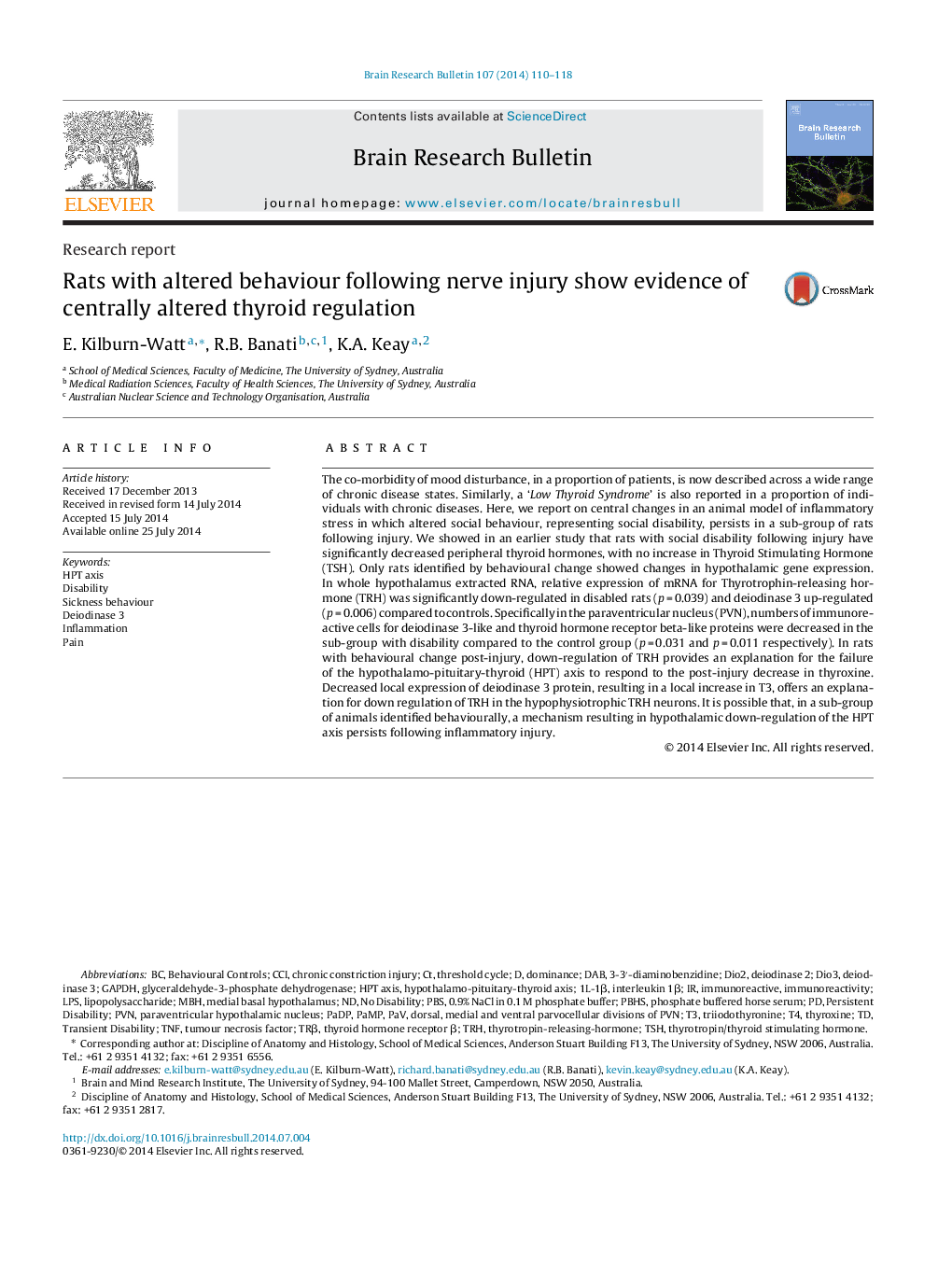| Article ID | Journal | Published Year | Pages | File Type |
|---|---|---|---|---|
| 4318790 | Brain Research Bulletin | 2014 | 9 Pages |
•Rats with altered social behaviour following CCI have altered HPT axis regulation.•Decreased deiodinase 3 in the PVN offers an explanation for TRH down-regulation.•Unlike in acute illness, HPT suppression in chronic conditions appears maladaptive.
The co-morbidity of mood disturbance, in a proportion of patients, is now described across a wide range of chronic disease states. Similarly, a ‘Low Thyroid Syndrome’ is also reported in a proportion of individuals with chronic diseases. Here, we report on central changes in an animal model of inflammatory stress in which altered social behaviour, representing social disability, persists in a sub-group of rats following injury. We showed in an earlier study that rats with social disability following injury have significantly decreased peripheral thyroid hormones, with no increase in Thyroid Stimulating Hormone (TSH). Only rats identified by behavioural change showed changes in hypothalamic gene expression. In whole hypothalamus extracted RNA, relative expression of mRNA for Thyrotrophin-releasing hormone (TRH) was significantly down-regulated in disabled rats (p = 0.039) and deiodinase 3 up-regulated (p = 0.006) compared to controls. Specifically in the paraventricular nucleus (PVN), numbers of immunoreactive cells for deiodinase 3-like and thyroid hormone receptor beta-like proteins were decreased in the sub-group with disability compared to the control group (p = 0.031 and p = 0.011 respectively). In rats with behavioural change post-injury, down-regulation of TRH provides an explanation for the failure of the hypothalamo-pituitary-thyroid (HPT) axis to respond to the post-injury decrease in thyroxine. Decreased local expression of deiodinase 3 protein, resulting in a local increase in T3, offers an explanation for down regulation of TRH in the hypophysiotrophic TRH neurons. It is possible that, in a sub-group of animals identified behaviourally, a mechanism resulting in hypothalamic down-regulation of the HPT axis persists following inflammatory injury.
